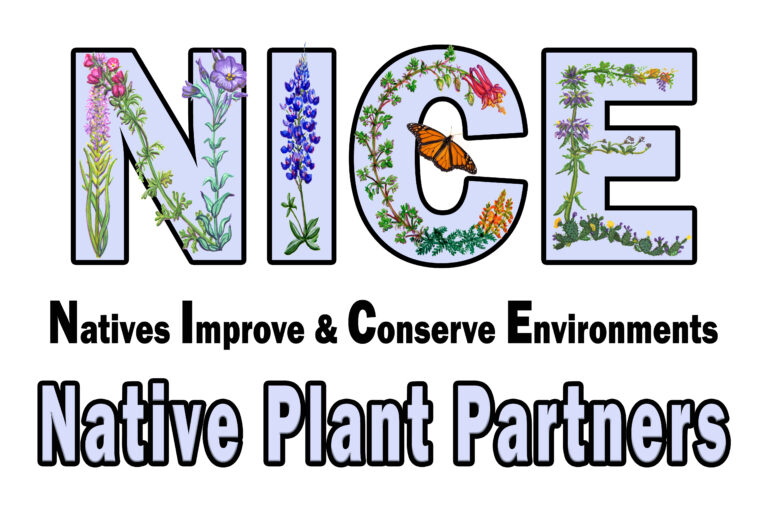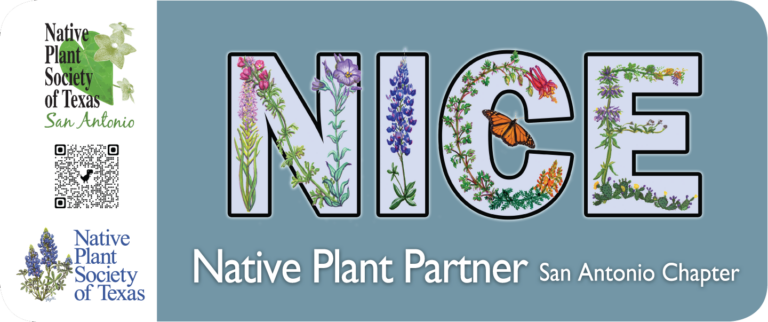
The NICE program is a voluntary collaboration between individual chapters of the Native Plant Society of Texas (NPSOT) and select local nurseries, called Native Plant Partners (NPP). The goal of the NICE program is to promote and expand the availability and use of native plants in residential and commercial landscapes that are appropriate to the local ecoregion. Native plants are defined as those plants that were growing naturally in the ecoregion before European colonization.
Native plants are beautiful and durable landscape alternatives to non-native plants. Native plants thrive and survive the extremes of Central Texas weather. Native plants also appeal to the environmental sensibilities of today’s consumer requiring little or no soil amendment, no chemical fertilizers and pesticides, and little supplemental water once established. More importantly, native plants support wildlife and provide ecological services such as capturing runoff and infiltrating water into the soil, preventing soil erosion, and cleaning our air by releasing oxygen and removing carbon which is then stored in the soil.
In the San Antonio area, the large variety of native plants provides multiple options that work well in various light and soil conditions and any type of garden design. The San Antonio chapter works with our Native Plant Partners each season to highlight and promote select native plants with seasonal interest (blooms, fruit and/or leaf color).
Our Native Plant Partners are committed to protecting our local ecosystem and do not stock or sell problematic plant species listed in the database of TexasInvasives.org.
For more information on this topic and to find native alternatives for the San Antonio area, click here.
Call or visit one of our Native Plant Partner nurseries listed below.
If your business desires to participate in the NICE program as a Native Plant Partner of the San Antonio Chapter, please contact us for more information at sanantonio@npsot.org.

San Antonio Chapter NICE Native Plant Partner Nurseries
State NICE Program
Learn more here about the NICE Program.
Please be aware that native plant partner nurseries are independently screened and designated by each NPSOT chapter. Not every chapter limits its program partners to nurseries that do not stock or sell problematic plant species listed in the database of TexasInvasives.org.
NICE News
Looking for landscaping help this fall?
These professionals can help with your native plant landscaping needs.

2024 NPSOT-SA Fall Garden Tour
Announcing NICE Plants of the Season for Summer 2024!


2024 Fall Plants of the Season
Announcing NICE Plants of the Season for Summer 2024!

2024 Summer Plants of the Season
Announcing NICE Plants of the Season for Summer 2024!

2024 Spring Plants of the Season
Announcing NICE Plants of the Season for Spring 2024!

Visit our New SA Chapter NICE Native Plant Partners!
Our chapter welcomes Pollinatives and The Nectar Bar to the NICE Program.

NPSOT-San Antonio Rolls out its NICE Program
The NICE program for the San Antonio Chapter is now up and running!


